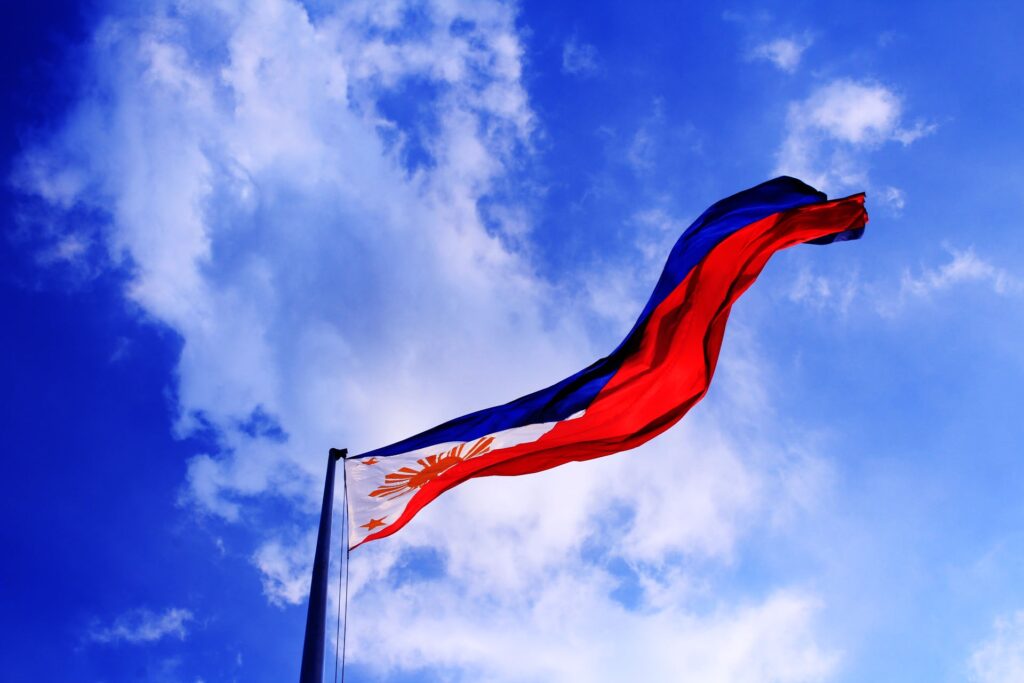Tagalog, the primary language of the Philippines, holds a significant place in the rich tapestry of Filipino culture. Understanding Tagalog not only provides a gateway to communication but also offers insights into the history, traditions, and heritage of the Filipino people. In this blog, we will delve into the depths of the Tagalog language and explore its various aspects, from its origins and phonetics to grammar, vocabulary, and cultural significance, and answer the question: What is Tagalog language?
What is Tagalog Language: Origins and History of Tagalog
Tagalog language, rooted in the Austronesian family of languages, has a fascinating history that spans centuries. As the language evolved, it transformed, heavily influenced by Spanish colonization. Exploring the origins of Tagalog helps us appreciate its linguistic journey and the amalgamation of cultural influences it embodies.
Austronesian Roots
Tagalog belongs to the Austronesian language family, which is one of the largest language families in the world. Austronesian languages are spoken across a vast region that stretches from Madagascar in the west to Easter Island in the east, encompassing Southeast Asia, the Pacific Islands, and parts of continental Asia. The Austronesian languages share a common ancestral language known as Proto-Austronesian, which is believed to have originated around 5,000 years ago in Taiwan. From there, Austronesian-speaking populations gradually migrated and dispersed throughout the Pacific and Southeast Asia, giving rise to various branches and languages, including Tagalog.
Pre-Spanish Influence
Before the arrival of the Spanish colonizers in the Philippines in the 16th century, Tagalog was already a well-established language with its distinct characteristics and vocabulary. It was primarily spoken in the Manila Bay region and surrounding areas, including parts of Luzon, the largest island in the Philippines. During this period, Tagalog incorporated loanwords from various indigenous languages in the Philippines, reflecting the cultural diversity and interactions among different ethnic groups in the region.
Spanish Influence
The most significant influence on the development of Tagalog came during the Spanish colonial era, which lasted for more than three centuries from the 16th to the 19th century. Spanish colonization introduced the Spanish language, culture, and institutions to the Philippines. As a result, Tagalog underwent significant changes, with the infusion of Spanish vocabulary, grammar, and pronunciation. Spanish loanwords became an integral part of the Tagalog lexicon, especially in domains such as religion, government, law, education, and cuisine. This period of Spanish influence shaped the Tagalog language as we know it today, giving it a unique blend of Austronesian and Spanish elements.
Standardization and Modernization
In the early 20th century, efforts were made to standardize and modernize Tagalog. In 1937, the Institute of National Language (now known as the Komisyon sa Wikang Filipino) was established to promote and develop the national language of the Philippines, which was based on Tagalog. This standardization process involved selecting a standardized grammar, vocabulary, and orthography for Tagalog, aiming to create a unified language for the Filipino people.
Filipino National Language
Tagalog, with its standardized form, eventually became the basis for the national language of the Philippines, known as Filipino. Filipino is the official language of the Philippines along with English. It is important to note that Filipino incorporates vocabulary and influences from other Philippine languages, not just Tagalog, reflecting the linguistic diversity of the country.
Understanding the origins and history of Tagalog helps us recognize the complex linguistic journey it has undergone, incorporating influences from its Austronesian roots, indigenous languages of the Philippines, and Spanish colonization. Today, Tagalog continues to evolve and adapt, reflecting the changing dynamics of Filipino society and its interactions with other cultures.
Tagalog Phonetics and Pronunciation
To grasp the essence of Tagalog, understanding its phonetic system is essential. Pronouncing Tagalog sounds and letters correctly adds authenticity to your communication. Familiarize yourself with Tagalog phonetics to better navigate conversations and improve your fluency.
Tagalog Grammar Essentials
Tagalog grammar follows a unique structure, characterized by verb conjugation, aspect markers, and noun modifiers. By grasping the fundamentals of Tagalog sentence construction, you can convey your thoughts effectively and gain a deeper understanding of Filipino linguistic patterns.
Tagalog Vocabulary and Common Phrases
Building a robust vocabulary is integral to any language-learning journey. Learn commonly used Tagalog words and phrases to facilitate everyday communication. Mastering Tagalog expressions, idioms, and proverbs further enriches your understanding of Filipino culture and its nuances.
Tagalog Writing System
The writing system of Tagalog has transformed throughout history. From the ancient Baybayin script to the current usage of the Latin alphabet, understanding Tagalog writing conventions enhances your ability to read and write in the language.
Dialects and Regional Variations
Tagalog boasts several regional variations and dialects across different provinces in the Philippines. Exploring these differences helps you appreciate the diverse linguistic landscape of Tagalog-speaking communities and deepens your cultural understanding.
- Batangas Tagalog: Batangas is known for its distinct variation of Tagalog, characterised by a unique accent and vocabulary. The pronunciation of certain sounds differs from standard Tagalog, and there are specific words and expressions commonly used in Batangas that may not be familiar to speakers from other regions.
- Bulacan Tagalog: Bulacan, a province located in Central Luzon, has its own variation of Tagalog. The accent and intonation in Bulacan Tagalog may differ from the standard form, and there are also vocabulary differences. Some words and phrases used in Bulacan Tagalog may not be widely understood outside the province.
- Manila Tagalog: Manila, the capital city of the Philippines, is a melting pot of different dialects and regional variations. The Tagalog spoken in Manila is considered the standard form and is widely understood throughout the country. It serves as the basis for Filipino, the national language of the Philippines.
- Quezon Province Tagalog: Quezon Province, located in the southern part of Luzon, has its own distinct Tagalog variation. The accent, intonation, and vocabulary may differ from standard Tagalog, reflecting the local culture and traditions of the province.
- Batanes Tagalog: Batanes, the northernmost province of the Philippines, has a unique variation of Tagalog influenced by the Ivatan language and culture. The Tagalog spoken in Batanes may incorporate Ivatan words and expressions, making it distinct from other regional variations.
Appreciating Dialectal Differences
Exploring the diverse regional variations and dialects of Tagalog allows for a deeper appreciation of the linguistic landscape and cultural diversity within Tagalog-speaking communities. These variations reflect the rich history, local customs, and interactions with neighboring languages that have shaped the development of Tagalog in different regions.
By familiarising oneself with these dialectal differences, we can answer the question: What is Tagalog language? One can gain a better understanding of the unique expressions, vocabulary, and pronunciation patterns that characterize each regional variation. This knowledge helps to foster cultural appreciation and facilitates effective communication when interacting with people from different provinces in the Philippines.
Tagalog in Popular Culture and Media
Tagalog’s influence extends beyond everyday communication. It permeates Philippine literature, music, and film. Discover the rich literary tradition of Tagalog, explore iconic works, and embrace the impact of Tagalog on Filipino popular culture.
Learning Resources and Tools for Tagalog
Embarking on a language learning journey requires reliable resources. Online platforms, language learning apps, courses, and websites offer numerous tools to assist you in your quest to learn Tagalog effectively. Dive into these resources to enhance your language skills.
Importance of Tagalog for Cultural Connection
Learning Tagalog opens doors to cultural connections with the Filipino community. Whether traveling to the Philippines or engaging with Filipino friends and colleagues, speaking Tagalog fosters deeper bonds and a greater appreciation for Filipino customs and traditions.
Cultural Understanding
People be asking “What is Tagalog Language?” Learning Tagalog allows individuals to gain a deeper understanding of Filipino culture. Language is an essential aspect of any culture, and by learning Tagalog, individuals can access a wealth of cultural knowledge embedded in the language itself. This includes idioms, proverbs, and expressions that reveal unique insights into Filipino values, beliefs, and ways of life. Understanding these linguistic nuances helps foster a greater appreciation for Filipino customs, traditions, and social norms.
Meaningful Communication
Speaking Tagalog enables more meaningful and authentic communication with the Filipino community. When engaging with Filipinos, whether in personal or professional settings, being able to converse in their native language creates a stronger connection and demonstrates respect for their culture. It shows a genuine interest in their experiences, perspectives, and stories. By speaking Tagalog, individuals can bridge potential language barriers, engage in deeper conversations, and build stronger relationships with Filipinos.
Enhanced Travel Experience
For individuals traveling to the Philippines, knowing Tagalog significantly enhances the overall experience. Being able to communicate with locals in their native language opens doors to a more immersive cultural experience. It allows travelers to navigate through daily activities, interact with locals, and explore off-the-beaten-path destinations that might not be as accessible to non-Tagalog speakers. Speaking Tagalog also increases safety and confidence while traveling, as individuals can better understand directions, ask for assistance, and connect with the local community.
Appreciation for Filipino Arts and Media
Learning Tagalog enables individuals to fully appreciate the richness of Filipino arts and media. By understanding the language, one can enjoy Filipino literature, music, films, and television shows in their original form, without relying solely on translations or subtitles. This deeper engagement allows individuals to connect more intimately with the stories, emotions, and cultural references conveyed through these artistic expressions. It also enables individuals to participate in and contribute to discussions about Filipino arts and media, further strengthening cultural connections.
Professional Opportunities
Proficiency in Tagalog can create numerous professional opportunities, especially in fields that involve interactions with the Filipino community or businesses with ties to the Philippines. Many multinational companies operate in the Philippines, and being able to communicate effectively in Tagalog can be an asset for job seekers. Additionally, in industries such as tourism, hospitality, customer service, and cultural exchange programs, knowing Tagalog enhances one’s competitiveness and expands career prospects.
In summary, learning Tagalog facilitates communication and fosters a deeper understanding and appreciation of Filipino culture. It strengthens personal and professional connections, enhances travel experiences, and allows for a more comprehensive engagement with Filipino arts and media. Embracing Tagalog opens doors to meaningful cultural connections that enrich individuals’ lives and promote intercultural understanding.
Conclusion: What is Tagalog Language?
In conclusion, exploring the depths of the Tagalog language introduces us to a vibrant world of culture, history, and linguistic beauty. Embracing Tagalog empowers us to connect with the Filipino people on a deeper level and enhances our cultural experiences. So, embark on your Tagalog journey, unlock the beauty of the language, and open your heart to the Filipino spirit. Remember, this unveils the fascinating world of the Filipino language, and by understanding its intricacies, we unlock a wealth of cultural treasures by answering the question What is Tagalog Language?
Related Posts

Get a quote today
"*" indicates required fields
Subscribe today to receive the latest insights and updates from Sylaba Translations










